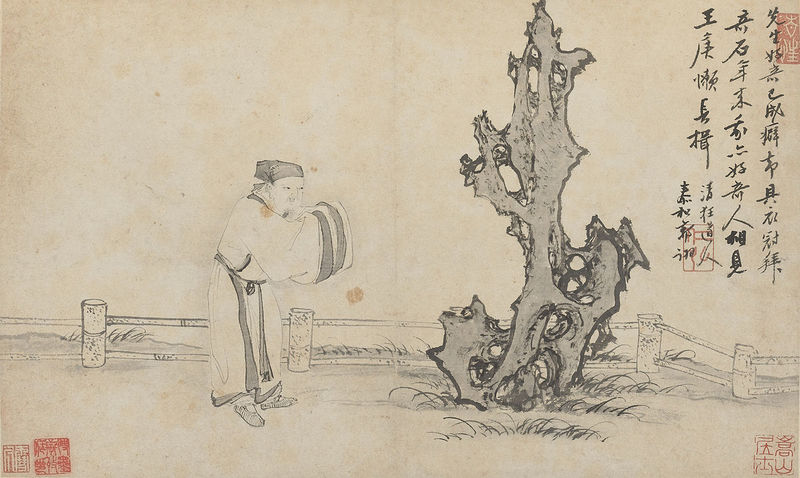The collection and appreciation of unusual natural stones is ancient, dating back over 1,000 years in China and later in other Asian countries. Chinese Scholar’s Stones are usually considered necessary to the Scholar’s studio serving as carrier for pure contemplation nature.
珍稀天然宝石的收集和鉴赏由来已久,在中国和其他亚洲国家已有 1000 多年的历史。文房珍玩中的供石作为自然景观的缩影,通常在书斋被当作文人雅士凝神静思的载体。
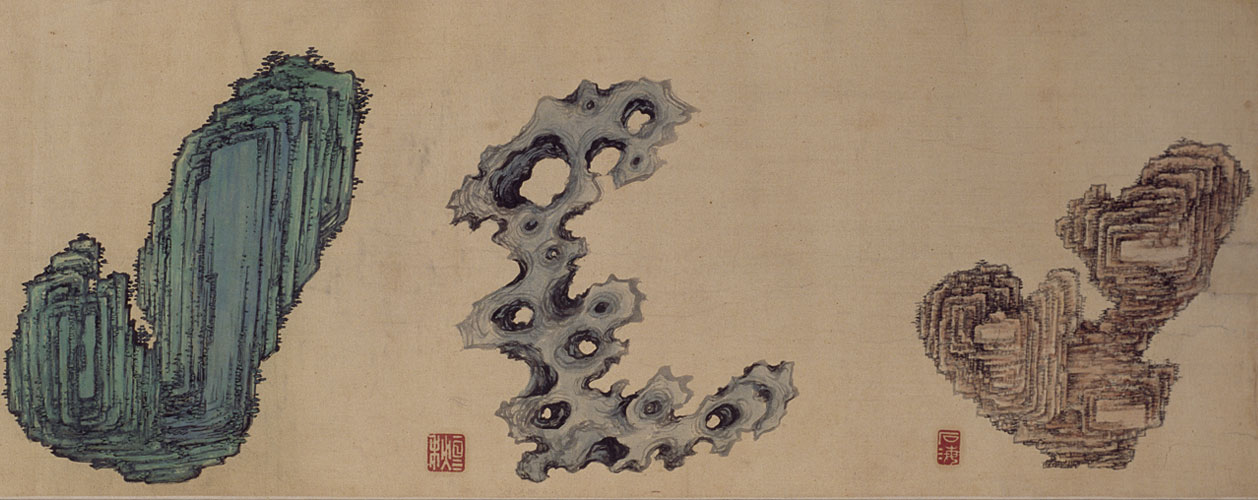
故宫博物院, 石海九如图卷, 清,石海绘,绢本,设色,237.厘米,28.厘米
Palace Museum, Stone Sea Nine Painting, Qing Dynasty, L. 237cm, W. 28cm, Beijing, China
As Harvard Art Museum’s Curator Emeritus Robert D. Mowry says, “like a landscape painting, the rock represented a microcosm of the universe on which the Scholar could meditate within the confines of his studio or garden.”
正如哈佛艺术博物馆名誉馆长罗伯特·莫里 (Robert D. Mowry) 所说,“供石犹如泼墨山水画,岩石代表了宇宙的缩影,学者可以在书房或花园的一方天地内沉思冥想。”
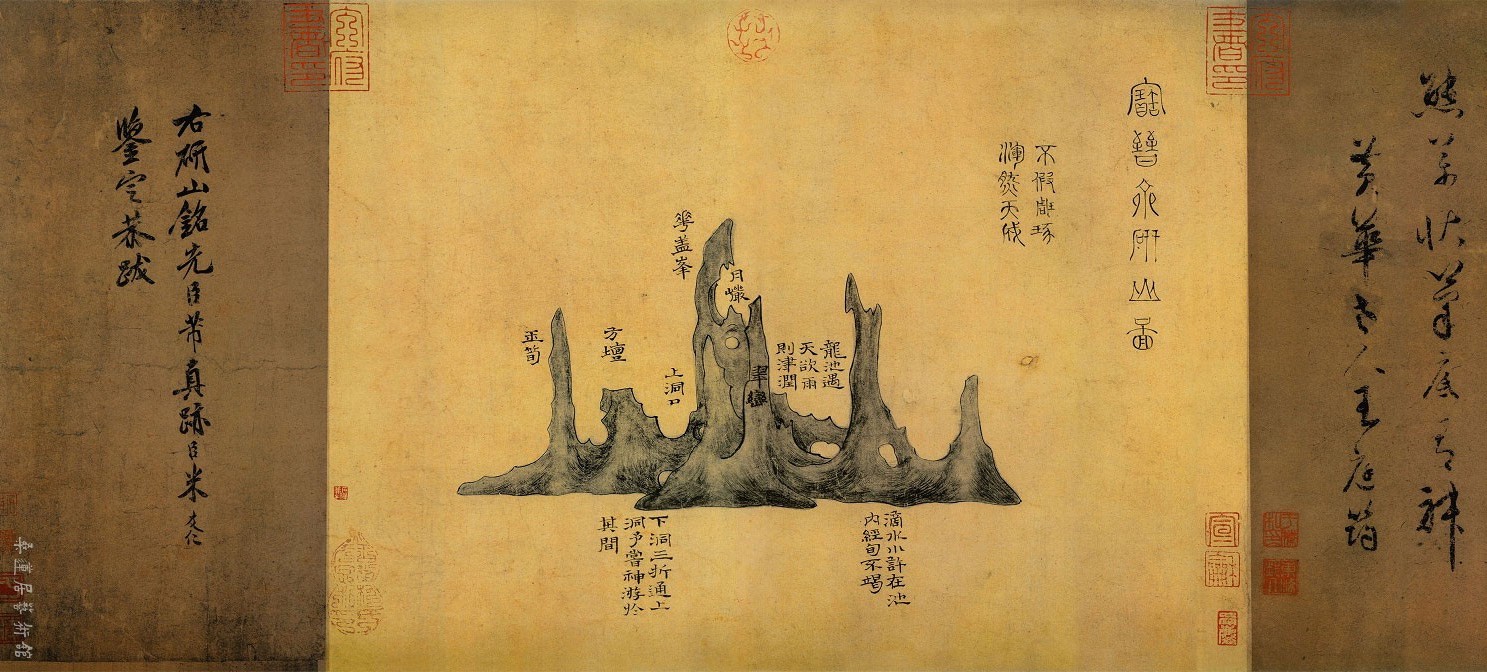
宋 · 米芾《研山铭》, 北京故宫博物院藏, 绢本手卷,行书,卷纵36厘米,横136厘米
Palace Museum, Ming Shan Yan, Mi Fu, W. 36cm, L. 136cm, Beijing, China
A few of the mountainscapes may recall specific peaks but most represent imaginary mountains. The abstract forms may recall a variety of images to the viewer, such as dragons, phoenixes and even human figures. It was the abstract qualities that appealed to the Chinese Literati.
一些供石可能会让人想起特定山脉,但大多数代表的是想象中的山峰。 观者发挥想象力还可以联想到各种图像,例如龙凤甚至人物。 正是这种抽象的特质深深吸引着中国文人。
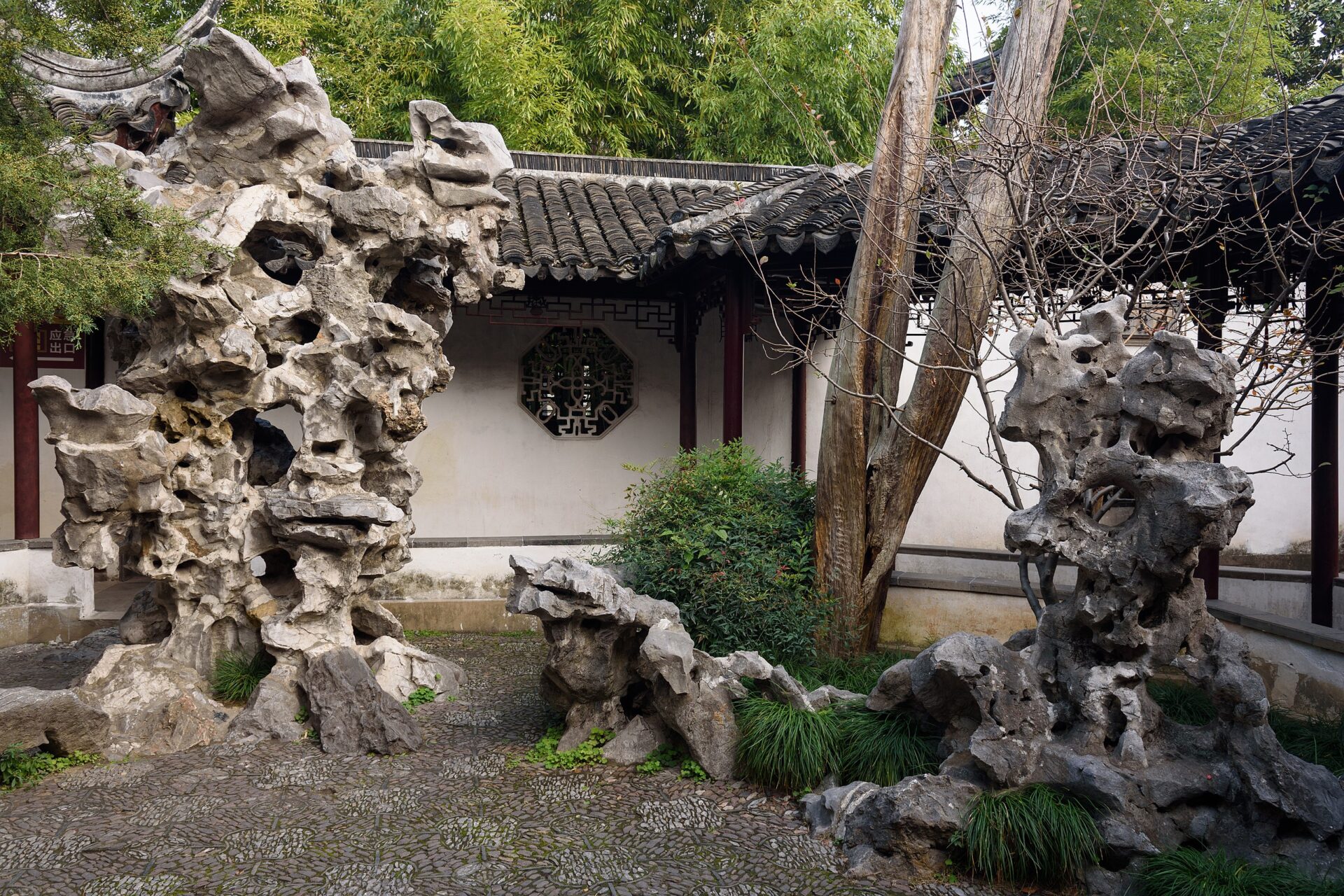
蘇州獅子林太湖石
Taihu Stone, Lion Garden, Suzhou, China
Mi Fu was one of the most famous calligrapher in Song Dynasty. He was so obsessed collecting stones, bow to them as he regard them as his ‘older brothers”. Because of the stones, Mi Fu lost his official position but had no regrets, instead he wrote “Worshiping Stones Picture” to express his pride.
宋朝大书法家米芾爱石痴迷至极,他称供石为自己的兄弟。米芾因为拜石丢了官却无悔,反而自写《拜石图》,倾诉得意之情。
Many factors contribute to the fantastic Chinese Scholar’s Stones, ranging from geographic origin to the colour and texture of the stone. A number of terms were created to describe the desired qualities in a Chinese Scholar’s Stone, the most common standards are shou (thin, 瘦), tou (openess,透), lou(perforation, 漏) and zhou(wrinkling, 皱). It would be highly valued by the hollow part of the stone to be able to create a strong contrast with the material and light.
供石的评判标准有很多,从原产地到石头的颜色和纹理。人们创造了许多术语来描述供石所需的品质,最常见的标准是“瘦”、“透”、“漏”和“皱”。供石中空的部分能与石体和光线形成强烈对比则备受推崇。
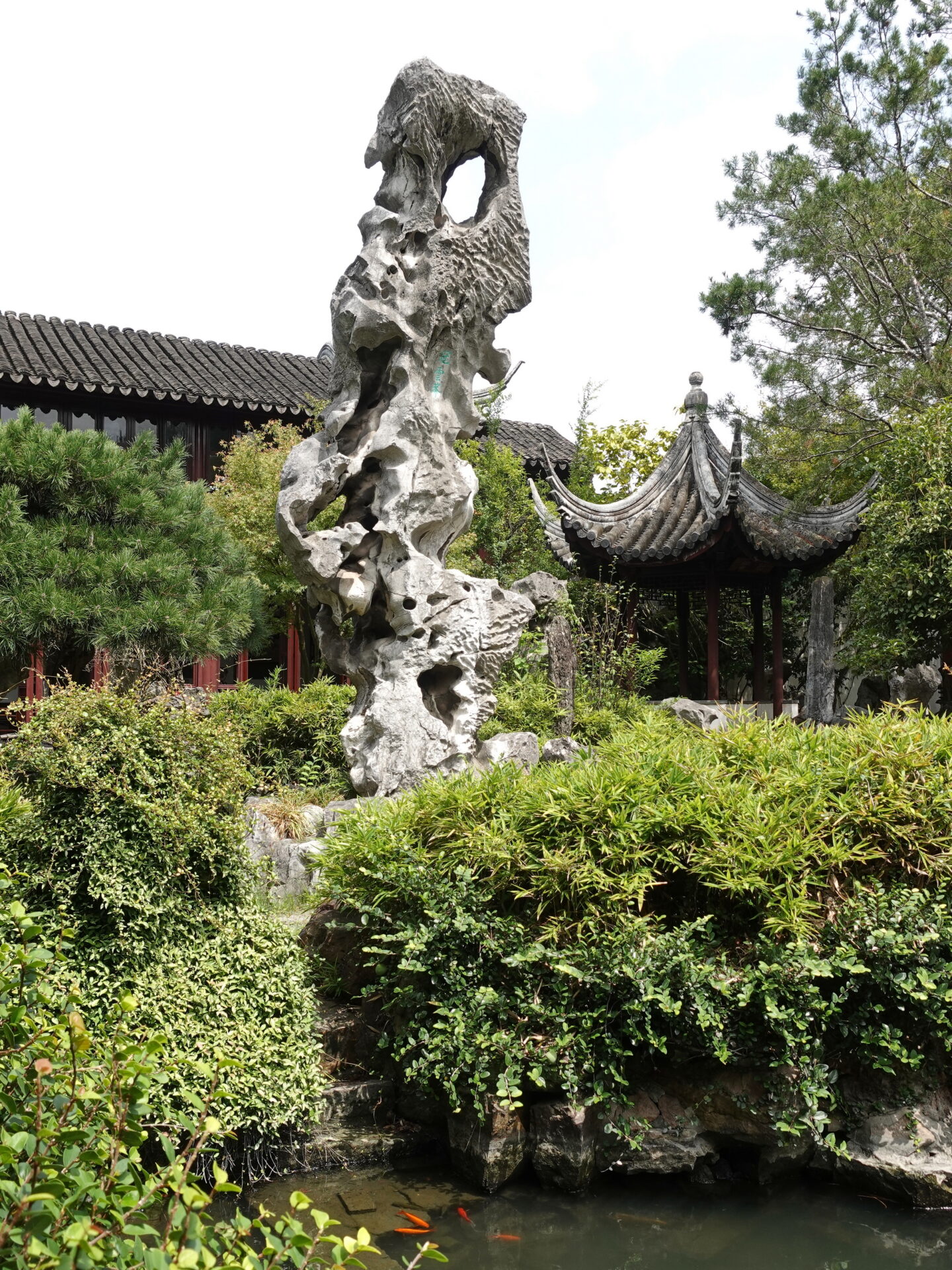
Taihu Stone, Liu Garden, Suzhou, China苏州留园冠云峰太湖石
The finest Chinese Scholar’s Stones often come from riverbeds or mountains. There are three main Chinese sources for the stones: Lingbi stone from Lingbi, Anhui province; Taihu stone from Lake Tai, Jiangsu province; Yingde or Ying stone from Yingde, Guangdong Province. Many valued Chinese Scholar’s Stones were varying forms of ancient marine lime- stone or metamorphic rocks from carbonate-based materials.
最精致的供石通常来自河床或山川中。珍罕供石的主要产地有三个,分别是中国安徽省北部灵璧县出产的灵璧石,江苏省太湖出产的太湖石和广东省英德市出产的英德石也称英石。许多供石都是不同形式的古海洋石灰岩或碳酸盐基材料的变质岩。
Unlike the Lingbi Stone and Ying Stone shaped mostly by water, Gobi Desert stones are shaped by wind and sands with deep, rich, and lustrous appearance which became very collectable. Gobi Chalcedony stones are stones that appear waxy, lustrous, sometimes semi-transparent, and they occur in a variety of colours.
与灵壁石、莹石大多由水塑造而成的不同,戈壁石由风沙塑造而成,其深邃、丰富、光泽的外观备受文人墨客的喜爱。 戈壁玉髓石是一种呈蜡状、有光泽、有时呈半透明状的宝石,有多种颜色。
Most Chinese stones tend to be varying shades of grey and black along with the white mineral formations of the stones. In contrast the harder, Gobi stones were often varying shades of yellow, red, browns, and are lighter colors than the more southern rocks.
大多数供石往往呈不同深浅的灰色和黑色,以及白色矿物结构。 相比之下,戈壁石更加坚硬,其颜色通常有不同深浅的黄色、红色和棕色,并且比南部的供石的颜色更浅也更丰富鲜艳。

